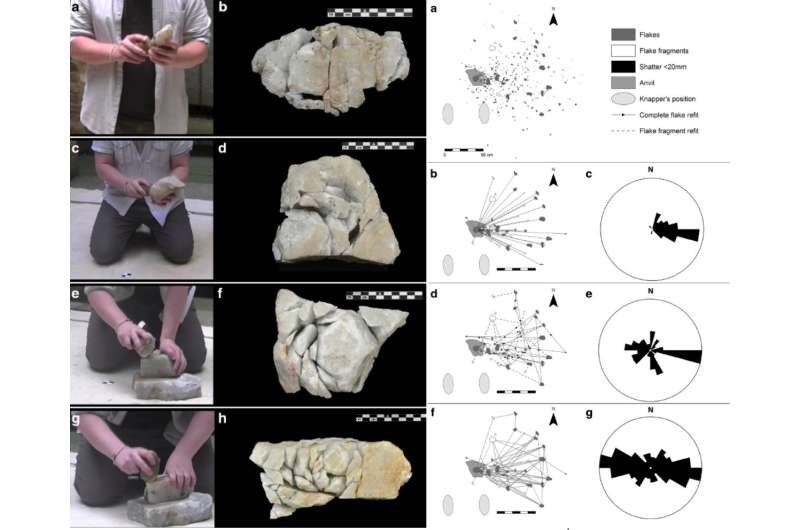Experimental work reproduces the knapping process at Olduvai

Alfonso Benito Calvo, a geologist at the Centro Nacional de Investigación sobre la Evolución Humana (CENIEH) has participated in a paper published recently in the journal Archaeological and Anthropological Sciences, which reproduced the knapping process observed at Olduvai (Tanzania), using one of the most abundant raw materials at those sites, quartzite rocks.
This was experimental work on which members from the CENIEH, University College London, Max Planck Institute and from the Universidad Autónoma de Barcelona have collaborated, based on studying the spatial patterns of the refits, that is to say, the assembly or matching of the lithic material to reconstruct the original geometry prior to knapping.
First, the quartzite rocks were knapped, and then the position and orientation of each resulting fragment were plotted exhaustively, yielding detailed maps showing the distribution of the materials.
"Starting from these maps, we have carried out a spatial analysis of the layout of the fragments and their refits, using GIS applications, designed for specialist analysis of spatial databases," explains Benito.
The results obtained have shown very different spatial patterns characteristic of each knapping technique: bipolar or freehand. Comparison of these theoretical experimental patterns with the distribution found in the sites will allow the amount of post-depositional disturbance suffered by the sites to be quantified, and thus further investigation of the processes which have affected them.
More information: Ignacio de la Torre et al. Spatial and orientation patterns of experimental stone tool refits, Archaeological and Anthropological Sciences (2018). DOI: 10.1007/s12520-018-0701-z
Provided by CENIEH





















